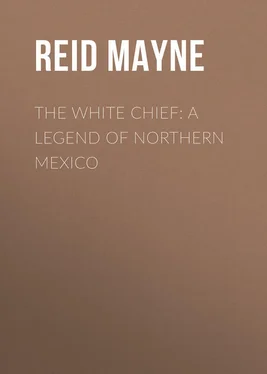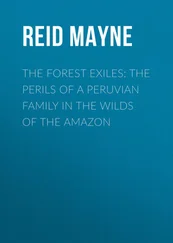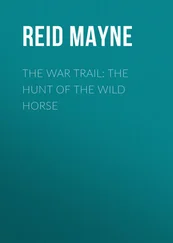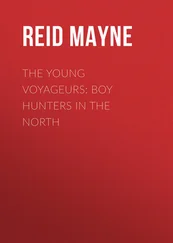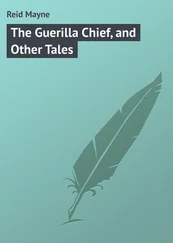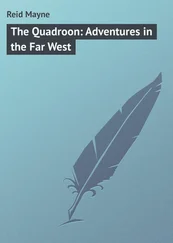Mayne Reid - The White Chief - A Legend of Northern Mexico
Здесь есть возможность читать онлайн «Mayne Reid - The White Chief - A Legend of Northern Mexico» — ознакомительный отрывок электронной книги совершенно бесплатно, а после прочтения отрывка купить полную версию. В некоторых случаях можно слушать аудио, скачать через торрент в формате fb2 и присутствует краткое содержание. Жанр: literature_19, foreign_antique, foreign_prose, на английском языке. Описание произведения, (предисловие) а так же отзывы посетителей доступны на портале библиотеки ЛибКат.
- Название:The White Chief: A Legend of Northern Mexico
- Автор:
- Жанр:
- Год:неизвестен
- ISBN:нет данных
- Рейтинг книги:5 / 5. Голосов: 1
-
Избранное:Добавить в избранное
- Отзывы:
-
Ваша оценка:
- 100
- 1
- 2
- 3
- 4
- 5
The White Chief: A Legend of Northern Mexico: краткое содержание, описание и аннотация
Предлагаем к чтению аннотацию, описание, краткое содержание или предисловие (зависит от того, что написал сам автор книги «The White Chief: A Legend of Northern Mexico»). Если вы не нашли необходимую информацию о книге — напишите в комментариях, мы постараемся отыскать её.
The White Chief: A Legend of Northern Mexico — читать онлайн ознакомительный отрывок
Ниже представлен текст книги, разбитый по страницам. Система сохранения места последней прочитанной страницы, позволяет с удобством читать онлайн бесплатно книгу «The White Chief: A Legend of Northern Mexico», без необходимости каждый раз заново искать на чём Вы остановились. Поставьте закладку, и сможете в любой момент перейти на страницу, на которой закончили чтение.
Интервал:
Закладка:
Mayne Reid
The White Chief: A Legend of Northern Mexico
Chapter One
Deep in the interior of the American Continent – more than a thousand miles from the shores of any sea – lies our scene.
Climb with me yonder mountain, and let us look from its summit of snow.
We have reached its highest ridge. What do we behold?
On the north a chaos of mountains, that continues on through thirty parallels to the shores of the Arctic Sea! On the south, the same mountains, – here running in separate sierras, and there knotting with each other. On the west, mountains again, profiled along the sky, and alternating with broad tables that stretch between their bases.
Now turn we around, and look eastward. Not a mountain to be seen! Far as the eye can reach, and a thousand miles farther, not a mountain. Yonder dark line rising above the plain is but the rocky brow of another plain – a steppe of higher elevation.
Where are we? On what summit are we standing? On the Sierra Blanca, known to the hunter as the “Spanish Peaks.” We are upon the western rim of the Grand Prairie .
Looking eastward, the eye discovers no signs of civilisation. There are none within a month’s journeying. North and south, – mountains, mountains.
Westward, it is different. Through the telescope we can see cultivated fields afar off, – a mere strip along the banks of a shining river. Those are the settlements of Nuevo Mexico, an oasis irrigated by the Rio del Norte. The scene of our story lies not there.
Face once more to the eastward, and you have it before you. The mountain upon which we stand has its base upon a level plain that expands far to the east. There are no foot-hills. The plain and the mountain touch, and at a single step you pass from the naked turf of the one to the rocky and pine-clad declivities of the other.
The aspect of the plain is varied. In some places it is green, where the gramma-grass has formed a sward; but in most parts it is sterile as the Sahara. Here it appears brown, where the sun-parched earth is bare; there it is of a sandy, yellowish hue; and yonder the salt effervescence renders it as white as the snow upon which we stand.
The scant vegetation clothes it not in a livery of verdure. The leaves of the agave are mottled with scarlet, and the dull green of the cactus is still further obscured by its thickly-set spines. The blades of the yuccas are dimmed by dust, and resemble clusters of half-rusty bayonets; and the low scrubby copses of acacia scarce offer a shade to the dusky agama and the ground rattlesnake. Here and there a solitary palmetto, with branchless stem and tufted crown, gives an African aspect to the scene. The eye soon tires of a landscape where every object appears angular and thorny; and upon this plain, not only are the trees of that character, but the plants, – even the very grass carries its thorns!
With what sensations of pleasure we turn to gaze into a lovely valley, trending eastward from the base of the mountain! What a contrast to the arid plain! Its surface is covered with a carpet of bright green, enamelled by flowers that gleam like many-coloured gems; while the cotton-wood, the wild-china-tree, the live-oak, and the willow, mingle their foliage in soft shady groves that seem to invite us. Let us descend!
We have reached the plain, yet the valley is still far beneath us – a thousand feet at the least – but, from a promontory of the bluff projecting over it, we command a view of its entire surface to the distance of many miles. It is a level like the plain above; and gazing down upon it, one might fancy it a portion of the latter that had sunk into the earth’s crust, so as to come within the influence of a fertilising power denied to the higher region.
On both sides of it, far as the eye can reach, run the bordering cliffs, stepping from one level to the other, by a thousand feet sheer, and only passable at certain points. There is a width of ten miles from cliff to cliff; and these, of equal height, seem the counterparts of each other. Their grim savage fronts, overhanging the soft bright landscape of the valley, suggest the idea of a beautiful picture framed in rough oak-work.
A stream, like a silver serpent, bisects the valley – not running in a straight course, but in luxuriant windings, as though it loved to tarry in the midst of that bright scene. Its frequent curves and gentle current show that it passes over a surface almost plane. Its banks are timbered, but not continuously. Here the timber forms a wide belt, there only a fringe scarce shadowing the stream, and yonder the grassy turf can be distinguished running in to the very water’s edge.
Copse-like groves are scattered over the ground. These are of varied forms; some perfectly circular, others oblong or oval, and others curving like the cornucopias of our gardens. Detached trees meet the eye, whose full round tops show that Nature has had her will in their development. The whole scene suggests the idea of some noble park, planted by design, with just timber enough to adorn the picture without concealing its beauties.
Is there no palace, no lordly mansion, to correspond? No. Nor palace nor cottage sends up its smoke. No human form appears within this wild paradise. Herds of deer roam over its surface, the stately elk reposes within the shade of its leafy groves, but no human being is there. Perhaps the foot of man never —
Stay! there is one by our side who tells a different tale. Hear him.
“That is the valley of San Ildefonso.” Wild though it appears, it was once the abode of civilised man. Near its centre you may note some irregular masses scattered over the ground. But for the trees and rank weeds that cover them, you might there behold the ruins of a city.
“Yes! on that spot once stood a town, large and prosperous. There was a Presidio with the flag of Spain flying from its battlements; there was a grand Mission-house of the Jesuit padrés; and dwellings of rich miners and ‘hacendados’ studded the valley far above and below. A busy populace moved upon the scene; and all the passions of love and hate, ambition, avarice, and revenge, have had existence there. The hearts stirred by them are long since cold, and the actions to which they gave birth are not chronicled by human pen. They live only in legends that sound more like romance than real history.
“And yet these legends are less than a century old! One century ago, from the summit of yonder mountain could have been seen, not only the settlement of San Ildefonso, but a score of others – cities, and towns, and villages – where to-day the eye cannot trace a vestige of civilisation. Even the names of these cities are forgotten, and their histories buried among their ruins!
“The Indian has wreaked his revenge upon the murderers of Moctezuma! Had the Saxon permitted him to continue his war of retaliation, in one century more – nay, in half that time – the descendants of Cortez and his conquerors would have disappeared from the land of Anahuac!
“Listen to the ‘Legend of San Ildefonso’!”
Chapter Two
Perhaps in no country has religion so many devoted days as in Mexico. The “fiestas” are supposed to have a good effect in Christianising the natives, and the saints’ calendar has been considerably enlarged in that pseudo-holy land. Nearly every week supplies a festival, with all its mummery of banners, and processions, and priests dressed as if for the altar-scene in “Pizarro,” and squibs, and fireworks, and silly citizens kneeling in the dust, and hats off all round. Very much like a London Guy-Fawkes procession is the whole affair, and of about like influence upon the morals of the community.
Читать дальшеИнтервал:
Закладка:
Похожие книги на «The White Chief: A Legend of Northern Mexico»
Представляем Вашему вниманию похожие книги на «The White Chief: A Legend of Northern Mexico» списком для выбора. Мы отобрали схожую по названию и смыслу литературу в надежде предоставить читателям больше вариантов отыскать новые, интересные, ещё непрочитанные произведения.
Обсуждение, отзывы о книге «The White Chief: A Legend of Northern Mexico» и просто собственные мнения читателей. Оставьте ваши комментарии, напишите, что Вы думаете о произведении, его смысле или главных героях. Укажите что конкретно понравилось, а что нет, и почему Вы так считаете.
